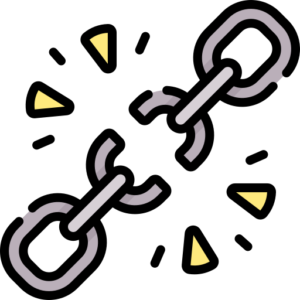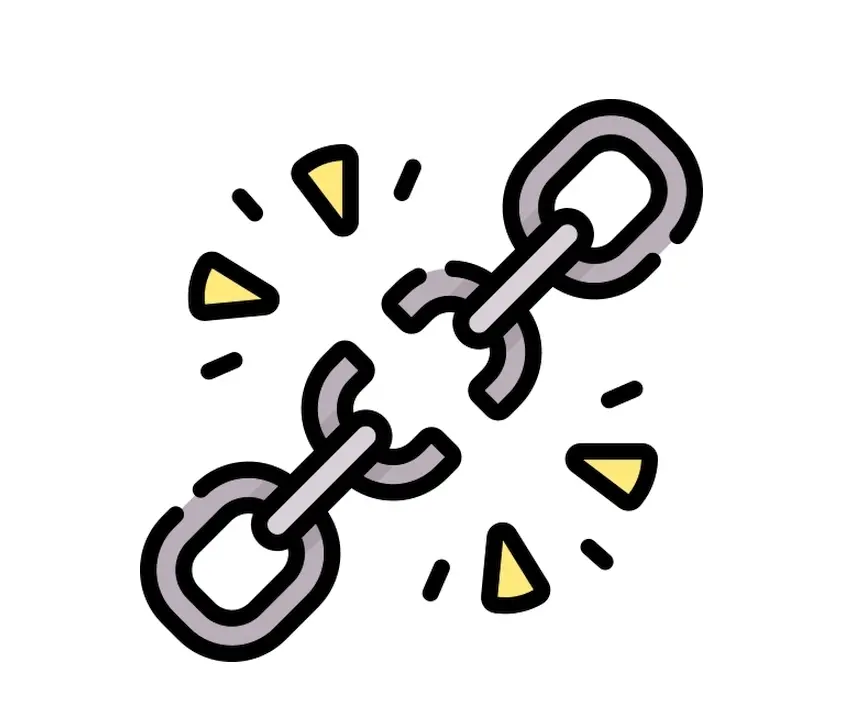
Buying a house can be a particularly complicated affair. The industry uses terms that deliberately seem confusing to outsiders. Why else would you start talking about heavy machinery like chains?
If you expected this post to be about heavy metal links clanking on the floor, you’re in the wrong place!
No onward chain only tends to come into play when you are buying a property from another home owner. For instance, if you are outrightly buying a new build home this this entire issue won’t apply.
We will discuss on here what a chain is in the property world and where you can expect to see it.
What is “No Onward Chain”?
No Onward Chain is a situation in which the seller you are purchasing your home from does not need the funds from the sale of the current house to buy their new one.
They can “go it alone”. Maybe they already have enough cash in their bank account to buy the next home (imagine the thought).
There are big reasons why no onward chain is good for a buyer – which we go into further down.
How is this different to people who are in chains?
Property chain properties are a little more complicated to buy. Some might even say they are risky to buy. In truth, entering a chain property market sometimes is all we can afford to do.
If you are not entirely familiar with chain property purchases, here is a small explanation of how chains work in the property world:
The property market is always moving with transactions. Some people are looking to trade up to a bigger home because of a growing family. Others are looking to downsize as part of their retirement. And on the other side of the equation there are the new first time buyers without any property to start with.
Typically these buyers will line themselves up, so that at the bottom of the chain the first time buyer is coming on (with no property to sell), all the way through to the top of the chain where someone is selling up and does not need another property to buy. This will form a group of people known as the chain.
No individual person in the chain wants to have any period of time being without a home to live in – homelessness is not pleasant. So to avoid anyone becoming homeless, all parties who are connected need to move homes on the same day.
This means that everyone in the chain needs to: be comfortable with what they are buying, are ready to commit to signing and can transfer funds all within one day. Sounds stressful? It usually is.
How big can a chain be?
There is no limit to the length of a property chain. However, the longer the property chain, the higher the risk of it collapsing. There are chains that have been as long as 10 people. But for other types of property the chain only needs to be between two.
What kind of people are in no onward chain?
Below are the categories of buyers and sellers that are not in chains:
- Buy to let investors
These are people who buy properties purely to rent them out to prospective buyers. A buy to let property sale will not require the investor to move home (he already lives in a separate one). Because of this, there is unlikely to be a delay when the deal has been agreed. - Probate Sales
This type of sale is conducted by a relative or beneficiary of a deceased property owner. In this situation there are no sale-dependent factors other than a buyer needing to sell the home relatively quickly if they need to settle an inheritance tax bill. - Cash Buyers
Cash Buyers are buyers who do not need a mortgage to fund the house purchase. Some cash buyers purchase a home without any surveys being done, and so this can be a considerably faster process than a mortgage buyer. - Repossessed property sales
These types of sales are done by mortgage lenders. The purpose of selling the property is to clear the mortgage loan debt of the previous owner of the house. Prices tend to be at a discount to market value to encourage a quick sale. - Auction Sales
One of the fastest ways to sell a home. Assuming the bids in the auction room are higher than any reserve price, the home will be paid for fully in a very short space of time (typically within 1 month but dependent on the rules of the auction house)
How does a chain affect my buying timeline?
Higher risk of the chain breaking
Because of the larger number of parties involved in the chain transactions, there is a higher chance of the chain breaking. This could be down to any issues that a buyer faces that causes them to pull out of buying:
- Losing a job
- Breaking up with a partner
- Finding costly repairs that are needed for a property
If a buyer does pull out of the chain, a replacement buyer needs to be found to complete the chain once again. If this can’t be done then all buyers that were due to purchase their home may have to abandon plans and look elsewhere.
Conveyancing process
Conveyancing always runs the risk of taking longer than expected. When someone is in a non-chain purchase matters can be concluded within 4 weeks.
But when a chain is involved solicitors need to communicate well with each other to line all of their clients up for purchasing and moving on the same day.
This can mean it takes much longer for all parties to get ready – sometimes conveyancing can take 3 months.
Does no onward chain guarantee a property sale?
No. Nothing is guaranteed in the property world.
Non-chain purchases can and do collapse. Here are some of the reasons for this:
- The seller changes their mind about selling and decides to pull out
- The buyer decides against buying the property because, on inspection, it seems overpriced
- The buyer encounters difficulty in obtaining the necessary funds to complete the purchase. Some lenders can throw up issues later on in the process.
- The buyer may lose their job, effectively ceasing the mortgage application.
- A new third-party buyer offers the seller a higher value for the property which the seller goes for. This is called gazumping.
- Unusual issues might emerge after the mortgage is completed. For example, a survey may discover damp in a wall that neither buyer or seller want to pay for. This could then lead to delays in the negotiation between the seller and buyer which could abruptly end the purchase transaction.
Slow conveyancing can lead to issues for people in the chain which can cause a breakdown.
Could a break in the chain be good?
A chain breaks when one of the buyers or sellers has pulled out of the purchase or sale of their property. When this happens, their position in the chain needs to be filled by another party.
A break in the chain does risk your house sale or purchase falling through.
However sometimes there can be a hidden benefit to a break in the chain. Although a new buyer will need to be found for someone who has pulled out, this new person may be in a much better situation.
Example:
Tim is buying a home for the first time. He has an offer accepted on a home owned by Annie. Annie has also found a home to buy from Craig.
Tim loses their job before completing on the purchase, putting the transaction at risk. Annie is now unable to sell their home and has to pull out.
However Craig manages to find a new cash buyer. As cash buyers are chain free, this puts Craig in a much better position in terms of the timeline and avoids another chain of purchasers that might break up.
Can I be chain-free if I need a mortgage to buy?
Yes. You do not need to be a cash buyer to be classed as a “no onward chain” buyer.
As a first-time homebuyer, you are automatically chain-free. This is because your purchase of the house is not dependent on the sale of your old home even though you are taking a mortgage to purchase it.
Final Words
A home for sale with no chain is very appealing. There is less risk for you as the buyer and the timeline should be shorter with fewer people involved.
Unfortunately buyers know this too and may try to take advantage by asking for a higher price.
First and foremost – you need to be happy with the home being purchased. You will be living inside the home for a considerable amount of time so you need to like the place!
Make sure you check out our top tips for your house search.
Icon provided by Freepik at flaticon.com

